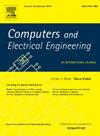Joint detection and localization of False Data Injection Attacks in smart grids: An enhanced state estimation approach
IF 4.9
3区 计算机科学
Q1 COMPUTER SCIENCE, HARDWARE & ARCHITECTURE
引用次数: 0
Abstract
The transition to smart grids introduces significant cybersecurity vulnerabilities, particularly with the rise of False Data Injection Attacks (FDIAs). These attacks allow malicious actors to manipulate sensor data, alter the internal state of the grid, and bypass traditional Bad Data Detection (BDD) systems. FDIAs pose a serious threat to grid security, potentially leading to incorrect state estimation and destabilization of the power system, which could result in system outages and economic losses. To address this challenge, this paper proposes a novel detection and localization method. First, false data and measurement errors are modeled as non-Gaussian noise. Recognizing the limitations of the traditional Extended Kalman Filter (EKF) under non-Gaussian conditions, the Maximum Correntropy Criterion (MCC) is integrated into the EKF to improve the robustness of state estimation. Additionally, the Maximum Correntropy Criterion Extended Kalman Filter (MCCEKF) is combined with Weighted Least Squares (WLS), and cosine similarity is introduced to quantify the differences between these two estimators for FDIA detection. A partition approach is then used to construct a logical localization matrix, with cosine similarity detection applied in each section to generate a detection matrix. By performing a logical AND operation on these matrices, the attacked bus is identified. Simulations on IEEE-14-bus and IEEE-30-bus systems validate the proposed approach, demonstrating its effectiveness in reliably detecting and localizing FDIAs in smart grids.
智能电网中虚假数据注入攻击的联合检测与定位:增强型状态估计方法
向智能电网的过渡带来了重大的网络安全漏洞,特别是随着虚假数据注入攻击(FDIAs)的兴起。这些攻击允许恶意行为者篡改传感器数据、改变电网内部状态并绕过传统的不良数据检测(BDD)系统。FDIA 对电网安全构成严重威胁,可能导致不正确的状态估计和电力系统不稳定,从而造成系统中断和经济损失。为应对这一挑战,本文提出了一种新型检测和定位方法。首先,错误数据和测量误差被建模为非高斯噪声。认识到传统的扩展卡尔曼滤波器(EKF)在非高斯条件下的局限性,最大熵准则(MCC)被集成到 EKF 中,以提高状态估计的鲁棒性。此外,最大熵准则扩展卡尔曼滤波器(MCCEKF)与加权最小二乘法(WLS)相结合,并引入余弦相似性来量化这两种估计器在 FDIA 检测中的差异。然后使用分区方法构建逻辑定位矩阵,并在每个部分应用余弦相似性检测生成检测矩阵。通过对这些矩阵执行逻辑 AND 运算,就能识别出被攻击的总线。在 IEEE-14 总线和 IEEE-30 总线系统上进行的仿真验证了所提出的方法,证明了它在智能电网中可靠检测和定位 FDIA 的有效性。
本文章由计算机程序翻译,如有差异,请以英文原文为准。
求助全文
约1分钟内获得全文
求助全文
来源期刊

Computers & Electrical Engineering
工程技术-工程:电子与电气
CiteScore
9.20
自引率
7.00%
发文量
661
审稿时长
47 days
期刊介绍:
The impact of computers has nowhere been more revolutionary than in electrical engineering. The design, analysis, and operation of electrical and electronic systems are now dominated by computers, a transformation that has been motivated by the natural ease of interface between computers and electrical systems, and the promise of spectacular improvements in speed and efficiency.
Published since 1973, Computers & Electrical Engineering provides rapid publication of topical research into the integration of computer technology and computational techniques with electrical and electronic systems. The journal publishes papers featuring novel implementations of computers and computational techniques in areas like signal and image processing, high-performance computing, parallel processing, and communications. Special attention will be paid to papers describing innovative architectures, algorithms, and software tools.
 求助内容:
求助内容: 应助结果提醒方式:
应助结果提醒方式:


